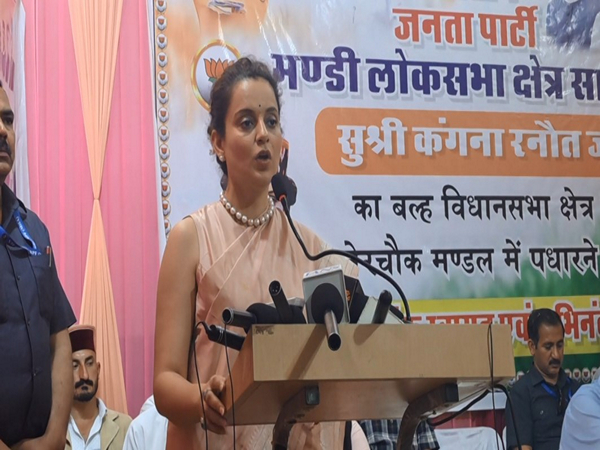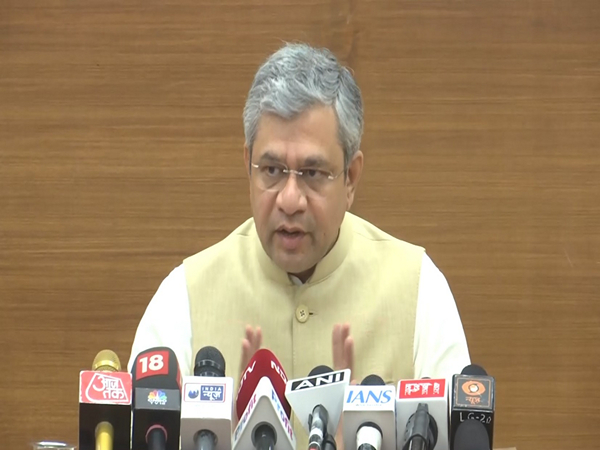63 per cent manufacturers report higher production in third quarter of FY 2021-22: FICCI
Jan 30, 2022

New Delhi [India], January 30 : Just days ahead of Union Budget, the Federation of Indian Chambers of Commerce & Industry's (FICCI) latest quarterly survey on manufacturing has revealed that 63 per cent of respondents reported higher production in the third quarter of 2021-22 (October-December 2021), significantly higher than the figures recorded in the last year's third quarter, which were around 33 per cent.
This assessment is also reflective in order books as 61 per cent of the respondents in October-December 2021-22 had a higher number of orders vis-a-vis July-September 2021-22.
FICCI's latest quarterly survey on manufacturing reveals that the outlook seems to have improved for the manufacturing sector in Quarter 3 (October-December 2021)
FICCI's latest quarterly survey assessed the performance/sentiments of manufacturers for Q3 (October-December 2021-22) for twelve major sectors namely automotive, capital goods, cement, chemicals, fertilisers and pharmaceuticals, electronics & electricals, medical devices, metal & metal products, paper products, textiles, textiles machinery and miscellaneous. Responses have been drawn from over 300 manufacturing units from both large and SME segments with a combined annual turnover of over 2.7 lakh crore.
As per the survey, the existing average capacity utilisation in manufacturing is somewhere in the range of 65-70 per cent, which reflects the sustained economic activity in the sector.
Nonetheless, the cost of doing business remains a cause for concern for the sector. High raw material prices, high cost of finance, the uncertainty of demand, shortage of working capital, high logistics cost, low domestic and global demand due to supply chain disruptions, excess capacities due to high volume of cheap imports into India, unstable market, high power tariff, are some of the major constraints which are affecting expansion plans of the respondents.
75 per cent of the respondents expect either more or the same level of inventory in October-December 2021-22, which is lesser as compared to the previous quarter, where around 85 per cent of respondents expected either more or the same level of inventory in Q2 2021-22, says the survey.
In the survey, the outlook for exports continues to indicate the expansion path as around 50 per cent of the participants are expecting a rise in their exports for Q-3 2021-22 vis a vis the same quarter (Q-3 2020-21) last year.
The hiring outlook for the manufacturing sector remains subdued as around 75 per cent of the respondents mentioned that they are not likely to hire additional workforce in the next three months.
As per the survey, the average interest rate paid by the manufacturers has reduced slightly to 8.4 per cent per annum as against 8.7 per cent per annum during last quarter and the highest rate remains as high as 15 per cent. Highlighting the fact that the cuts in repo rate in the last few months by RBI has not led to a proportional reduction in the lending rate as reported by around 60 per cent of the respondents.
As per the survey, based on expectations in different sectors, half of the sectors are likely to register strong growth in Q-3 2021-22 except a few as given in the table below.
Table: Growth expectations for Q-3 2021-22 compared with Q-3 2020-21
Sector Growth Expectation
Automotive: Moderate
Capital Goods: Strong
Cement: Strong
Chemicals, Fertilizers & Pharmaceuticals: Strong
Electronics & Electricals: Moderate
Medical Devices: Moderate
Metals & Metal Products: Moderate
Miscellaneous: Moderate
Paper Products: Strong
Textiles: Moderate
Textiles Machinery: Strong
Tyre: Strong
Note: Strong > 10%; 5% < Moderate < 10%; Low < 5%
Source: FICCI Survey
The cost of production as a percentage of sales for manufacturers in the survey has risen for 81 per cent of respondents in the latest survey which is more or less the same as in the previous survey (80 per cent respondents). So, for both quarters, this is considerably higher than that reported in Q4 2020- 21, where 72 per cent of respondents recorded an increase in their production costs. This is pointing towards an increasing trend and impacting competitiveness in the short term.
High raw material prices, increased transportation and logistics cost, and rise in the prices of diesel, LPG, natural gas, power, and fuel has been the main contributor to the increasing cost of production. Other factors affecting the cost of production are increasing labour cost, short supply of raw material, high cost of carrying inventory, and fluctuation in the foreign exchange rate.

















